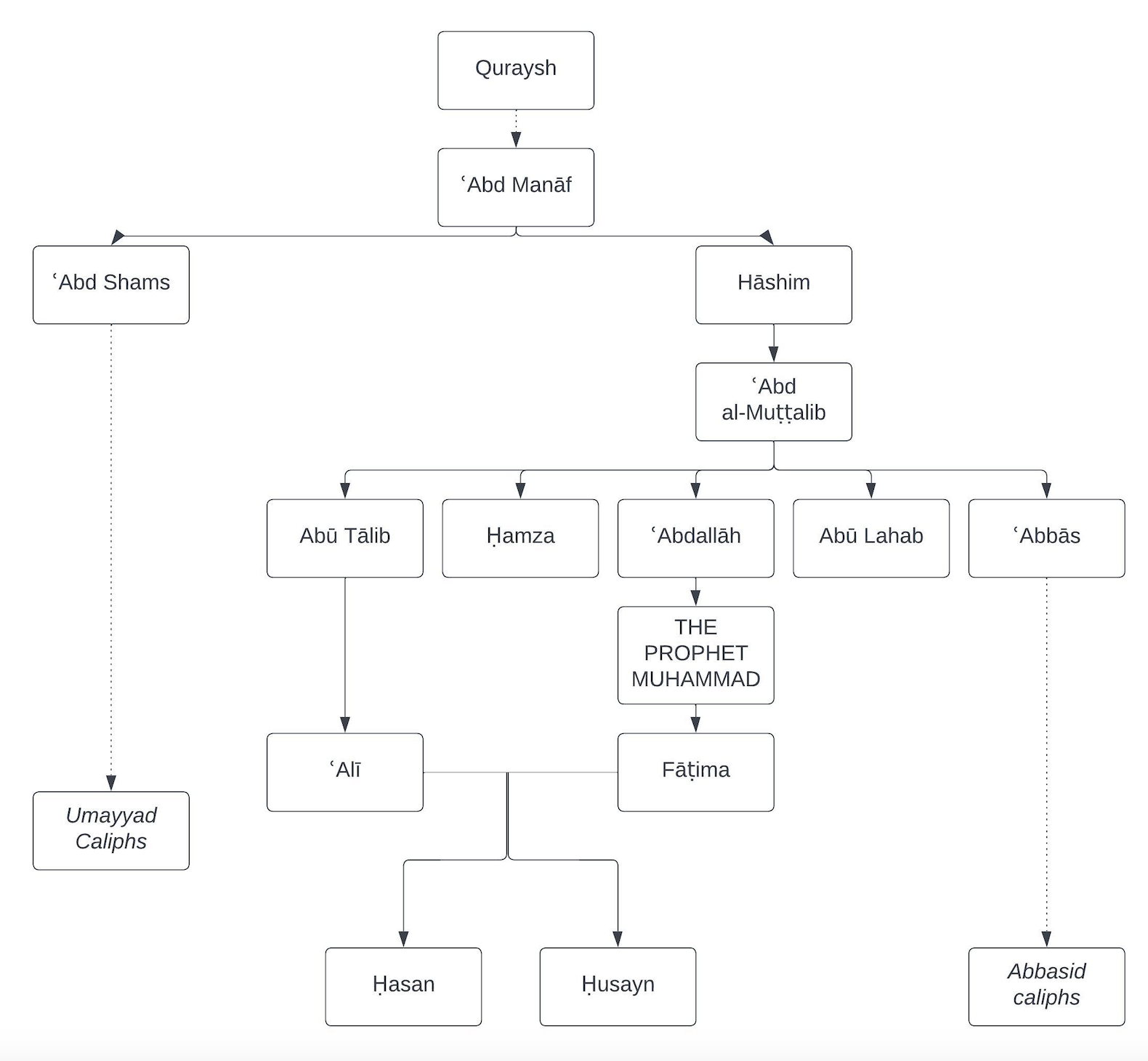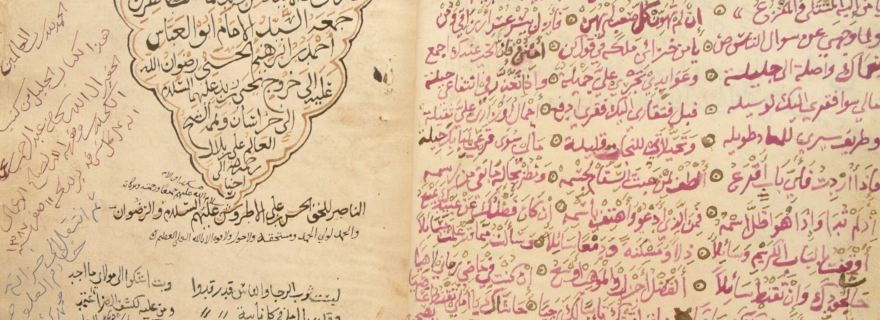ʿAbbāsid Ideology and the Alleged Exchange of Letters between Abū Jaʿfar al-Manṣūr and al-Nafs al-Zakiyya
Muḥammad b. ʿAbdallāh b. al-Ḥasan known as al-Nafs al-Zakiyya, considered by later Zaydiyya as of the third/ninth century as the third Zaydī Imām, revolted against the second ʿAbbāsid caliph Abū Jaʿfar ʿAbdallāh b. Muḥammad (r. 136–58/754–75) in 145/762–63 in Medina and died in battle on Monday, 14 Ramadan 145/6 December 762.
A letter exchange between the ʿAbbāsid caliph Abū Jaʿfar and Muḥammad b. ʿAbdallāh is first mentioned by al-Ṭabarī (d. 310/923) and by al-Azdī (d. 334/954–6), both rely on a tradition from Ibn Shabba (d. 262/876 or later) ¬ Abū Ghassān al-Kinānī (d. after 208/823-24), a Medinan who worked as a scribe (kātib) in the state administration. Sibṭ Ibn al-Jawzī (d. 654/1256), however, cites the letter exchange based on an independent report on the authority of Ibn al-Kalbī (d. 204/819).
The immediate challenge to the ʿAbbāsid propaganda was how to counter the attempts of the Zaydī rebels to create a new hegemony. This fabricated letter exchange, as I will be arguing, presents the ideological efforts that had been deployed early on to thwart early ʿAlid claims to the imāma, the supreme charismatic leadership of the community. The authenticity of the letter-exchange has been the subject of differing analysis by modern scholars; many discrepancies and textual variations in the various versions were also identified. A thorough literature review is given by Elad 174-177; and see now Sarḥān 52-62, and al-ʿĀnī 282-287, who surmises their authenticity. D.G. Tor avoids delving in the question of authenticity altogether, and trustingly confirms that “the content of these letters preserves an accurate historical memory of the theological claims that were being advanced at this time by the respective sides”. R. al-Sayyid does not address the matter, nonetheless he warrants no doubt as to their authenticity.
In this blogpost I will attempt to mark a new departure in approaching the authenticity question of these polemical letters, hoping to open new venues for further studies.
Although the sources emphasize the fact that the caliph had undertaken all possible stratagems in order to know the whereabouts of Muḥammad b. ʿAbdallāh al-Nafs al-Zakiyya and his brother Ibrāhīm and that he had, to no avail,spread his spies to investigate and seek information about them, nonetheless, the sources pass in silence over the method through which the caliph was able to send his letters. Moreover, Ibn Saʿd (d. 230/845), who is quoting an eyewitness, his direct mentor al-Wāqidī (d. 207/822), does not mention such an exchange; nor is the issue brought up in either Ibn Wāḍiḥ al-Yaʿqūbī’s (fl. late third/ninth century) or al-Masʿūdī’s (d. 345/956) works. In addition, no hint connoting it appears in what reached us from al-Jāḥiẓ’s books (although he mentions Muḥammad b. ʿAbdallāh, in the excerpts from Faḍl Hāshim ʿalā ʿAbd Shams. Early Zaydī sources also pass in silence over such a purported exchange. It is, however, first mentioned by ʿAlī b. Bilāl (death date unknown), a later Zaydī author of the Caspian region, in the supplement he wrote to Abū l-ʿAbbās al-Ḥasanī’s (d. 353/964–965) book, al-Maṣābīḥ min akhbār al-muṣṭafā, see also al-Muḥallī (d. 652/1254), al-Ḥadāʾiq al-wardiyya; nonetheless, there is no mention of a correspondence in the book of Ibn Bilāl’s contemporary al-Nāṭiq bil-Ḥaqq (d. ca. 424/1033), al-Ifāda fī tārīkh al-aʾimma al-sāda. The alleged letter exchange appears in Ibn Bilāl’s book with a partially quoted additional letter ostensibly attributed to Muḥammad b. ʿAbdallāh under the title al-Dāmigha(the Irrefutable). It is clear that the letter-exchange was introduced there not because it was perceived as historical or authentic, but rather to be refuted through the introduction of this final, overwhelming answer accredited to Muḥammad b. ʿAbdallāh.
I would read this so-called correspondence within the grid of the ideological models that were put into experimentation by the ʿAbbāsid propaganda after the triumph of the caliph over the Ḥasanid brothers, Muḥammad and his brother Ibrāhīm (d. in battle 145/763). The triumphant caliph (al-Manṣūr) exploited the ideologies that were current and seized the opportunity to formulate a new exposition of the “sacred history” of the ʿAbbāsids, making his own victory a new beginning, as a result of the efficacy of divine providence.
The ʿAbbāsid narratives of dynastic legitimacy that were put in circulation during the period of the daʿwa (the religio-political propaganda organization) and during the early reign of the first caliph Abū l-ʿAbbās al-Saffāḥ (r. Rabīʿ II 132/November 749 – Dhū ’l-Ḥijja 136/June 754) proposed different ideological frames of reference. These narratives were aimed at the maintenance of ideological legitimacy, as well as appropriate coercive potential during the revolutionary period and the beginning of their rule, and, moreover, in order to hold in check powerful centrifugal tendencies.
One of these narratives claimed legitimacy through a testament from the ʿAlid Abū Hāshim, grandson of Muḥammad ibn al-Ḥanafiyya. This narrative, however, became subject to modifications. In fact, since the reign of Abū Jaʿfar the narrative of ʿAbbāsid dynastic legitimacy started to experience profound changes moving away from the testament-narrative. The revolt of the two Ḥasanīd brothers was a direct blow to the ʿAbbāsid ideology which proclaimed that their dawla’s (state or dynasty) legitimacy is founded on their ʿAlid relation.
al-Masʿūdī contends that when the second ʿAbbāsid caliph Abū Jaʿfar imprisoned ʿAbdallāh b. al-Ḥasan b. al-Ḥasan and other members of his family in 144/762, he gave a speech at the podium in al-Hāshimiyya (an early, possibly itinerant, administrative center in a locale between Kūfa and al-Anbār) in front of the Khurasānian troops. The speech offers a unique narrative about the ʿAlid revolts and an insight into the ʿAbbāsid’s own right to rule as well as of their understanding of their “sacred history”. It insults ʿAlī b. Abī Ṭālib (this is the case in Abū Jaʿfar’s letter as well), disdains his rule and policies, and tarnishes his two sons, al-Ḥasan and al-Ḥusayn, and the latter’s grandson Zayd (d. 122/740) who led a revolt during the late Umayyad period. In fact, the speech reflects a triumphant attitude and, most probably, it must have been formulated after the final victory of Abū Jaʿfar over the two Ḥasanid brothers, when he proclaimed his new epithet al-Manṣūr, or The Victorious. Masʿūdī’s report offers a new narrative which reflects the propagation of new ideological strategies that are contrary to the testament-narrative, and with an ideological justification reconstructing the memory of the ʿAbbāsid’s past, that their legitimacy is unquestionable and sacred. Al-Qummī explains that caliph al-Mahdī (r. 158/October 775–169/August 785) was the first to abandon the testament-narrative in favor of a new official ideology of legitimacy based on a direct inheritance of the imāma through the Prophet’s uncle al-ʿAbbās b. ʿAbd al-Muṭṭalib (al-Jāḥiẓ, in Fī l-ʿAbbāsiyya speaks of “the rights of the ʿitra, i.e., next of male kin consisting of one’s offspring, the paternal uncles and their offspring, and the inheritance of the uncle,” with no mention of a testament). In fact, if we read this report by al-Qummī in the context of the above-mentioned speech by al-Manṣūr, it would become clear that the abandonment of the testament-narrative was gradual; this suggests “a processes whereby ideological complexes came to be structured and restructured, articulated and rearticulated” (Fairclough 91-93), they became subjected by the representation of a new historical phase. This connection is significant, it demonstrates that theoretical justification of the nascent dawla¾which was based on the triumphant differing slogans and propaganda of the revolutionary phase¾had to be not merely retouched but fundamentally restructured to suit the new ideological modulations to the changing circumstances, and to maintain the balance between revolution, remembrance, and the advent of a victorious new era.

Nonetheless, the question arises as why would Muḥammad b. ʿAbdallāh have accepted at all to participate in such a letter-exchange after he had already launched his uprising? Following the paths of his revolutionary predecessor, Zayd b. ʿAlī, Muḥammad had prior to his revolt announced his two summonses (daʿwa), a public call, and another intended to his close inner circle.
Moreover, the arguments brought forth in this alleged letter-exchange attempt to blur ʿAlid ideology. The ʿAlīds have been constructing their ideology and their understanding of their role in Islamic history since an early time while they were enthusiastically participating in revolutionary activities. The theological treatises of Zayd b. ʿAlī collected by the Kūfan Abū Khālid al-Wāsiṭī, as well as other speeches and summons attributed in the sources to Muḥammad al-Nafs al-Zakiyya, al-Ḥusayn al-Fakhkhī (d. 169/786 ), and Muḥammad’s half-brother Yaḥyā b. ʿAbdallāh (d. 187/803), all maintain the centrality and the privileged status of the charismatic just Imams as well as a sense of election of the choicest (al-khiyara, al-ṣafwa, Q 28:68; 33:36) from amongst the ahl al-bayt. Zayd b. ʿAlī emphasizes the role of the “remnant of truth” (baqiyyat al-ḥaqq) that resides in ahl al-bayt, who are the progeny of Abraham (Jarrar, “Abraham and the Search for Charisma”). The arguments there focus on a totally different set of ideological terminology which is not based, as the arguments in the alleged letters, on justification through maternal relations, which seems to have been raised by the ʿAbbāsids in their boasting over the Banū ʿAbd Shams (the brothers Hāshim and ʿAbd Shams were both sons of ʿAbd Manāf, great-grandfather of the prophet Muhammad. The Umayyads were the descendants of ʿAbd Shams) in terms of preference. It was used by the early Shīʿa of the ʿAbbāsids during the period of the daʿwa and was taken over by the ʿAbbāsid propagandists during the time of the second caliph Abū Jaʿfar. The arguments by the ʿAlīd revolutionaries rather based on divine selection (iṣṭifāʾ). ʿAlī belongs to the ʿitra as direct cousin to the Prophet and at the same time husband of his daughter, and moreover, through his direct designation (naṣṣ) by the Prophet on the Day of Ghadīr Khumm (18 Dhū ’l-Ḥijja 10/63), consequently, divine selection resides in this line of goodness, the goodly tree Q14:24 mentioned in al-Nafs al-Zakiyya’s professed letter to his close followers and in a letter by Yaḥyā b. ʿAbdallāh).
The letter-exchange as it reached us in sources from the ʿAbbāsid period shifts the whole argumentation towards a genealogical cerebration which seeks to establish the ʿAbbāsid right based on their paternal kinship with the Prophet prior to Islam, excluding the ʿAlīd concept of divine choice. In fact, the letter-exchange reflects a facet of hegemonic struggle and of existing power relations as they are formulated and introduced by the state apparatus; power is the fundamental principle in these letters. Although a mild ʿAlīd ideological terminology is given expression to in the letter attributed to Muḥammad b. ʿAbdallāh, to my mind, this was part of the discursive strategy and of the very process of the containment of ʿAlīd ideology, which becomes discrepantly formulated, to attain the reproduction, distribution, consumption, and rebuttal of this ideology (Fairclough).
The debate as portrayed in the alleged letters clearly reflects the ‘new’ ʿAbbāsid ideology which was in the making under the second ʿAbbāsid caliph Abū Jaʿfar and which found expression in the poetry of the time, e.g., Ibn Abī Ḥafṣa (d. 182/798).
Bibliography:
al-ʿĀnī, Ḥ. F. Z., Siyāsat al-Manṣūr Abī Jaʿfar al-dākhiliyya wa-l-khārijiyya, Baghdad 1981.
Elad, A., The Rebellion of Muḥammad al-Nafs al-Zakiyya in 145/762: Ṭālibīs and Early ‘Abbāsīs in Conflict, Leiden 2016.
Fairclough, N., Discourse and Social Change, Cambridge, UK, 1992.
Jarrar, M., “Abraham and the Search for Charisma and Legitimacy in Zaydī and Imāmī Discourses,” Shii Studies Review 4 (2020), 1-34.
Sarḥān, H., “Balāghat al-khiṭāb al-sijālī: muqāraba tadāwuliyya fī murāsalāt Abī Jaʿfar al-Manṣūr wa-l-Nafs al-Zakiyya,” al-Abhath 60-61 (2012-2013), 49-81.
al-Sayyid, R., al-Nafs al-Zakiyya, Muḥammad b. ʿAbdallāh b. al-Ḥasan b. al-Ḥasan b. ʿAlī b. Abī Ṭālib: Kitāb al-Siyar wa-mā baqiya min rasāʾil al-daʿwa wa-l-thawra, Beirut 2021.
Tor, D.G., “The Parting of Ways between ʿAlid Shiʿism and Abbasid Shiʿism: An Analysis of the Missives between the Caliph al-Manṣūr and Muḥammad al-Nafs al-Zakiyya,” Journal of Abbasid Studies 6 (2019), 209-227.
This blog entry is part of the Zaydi Studies Series commissioned and edited by Ekaterina (Kate) Pukhovaia, Leiden University.


